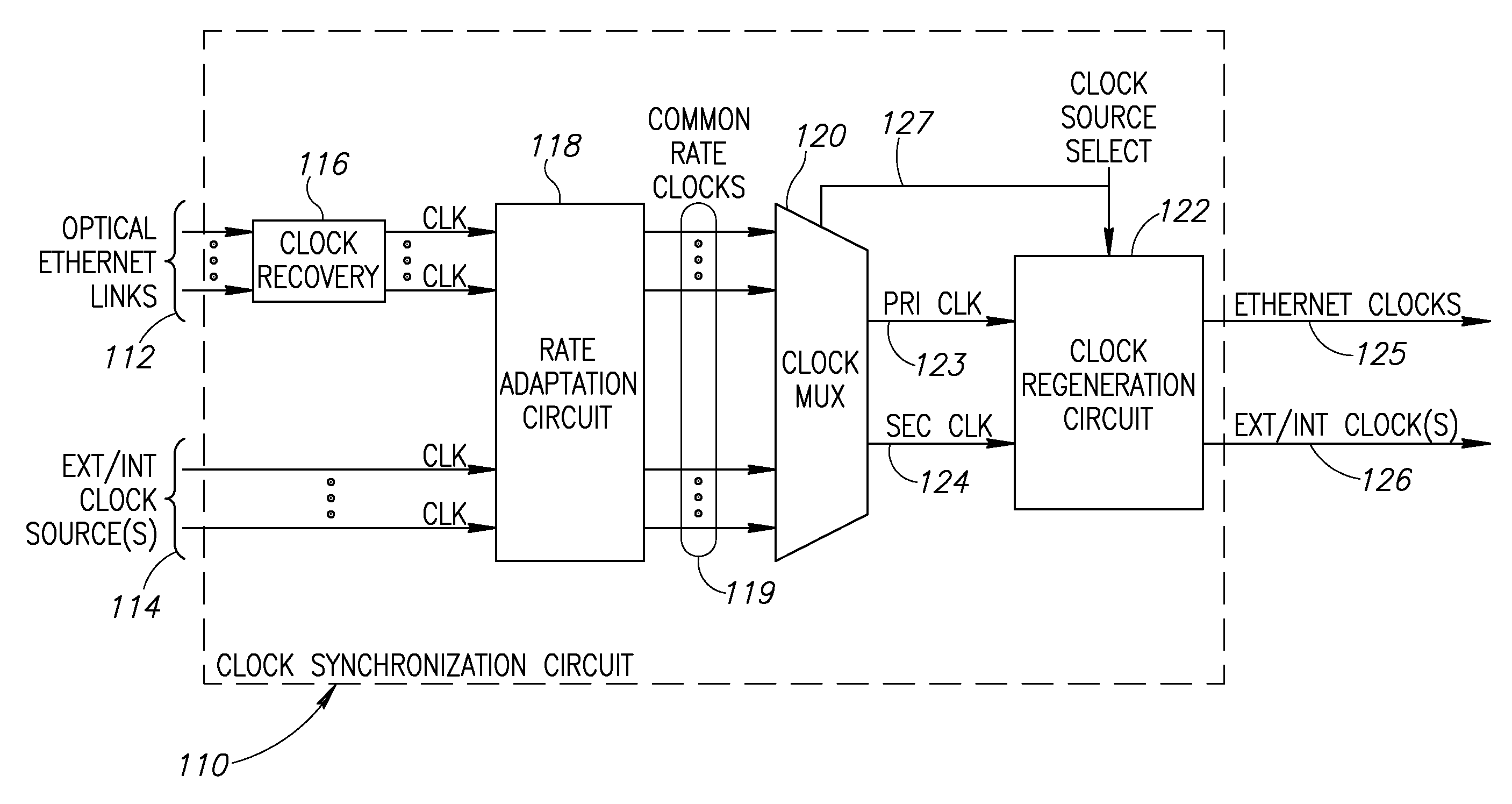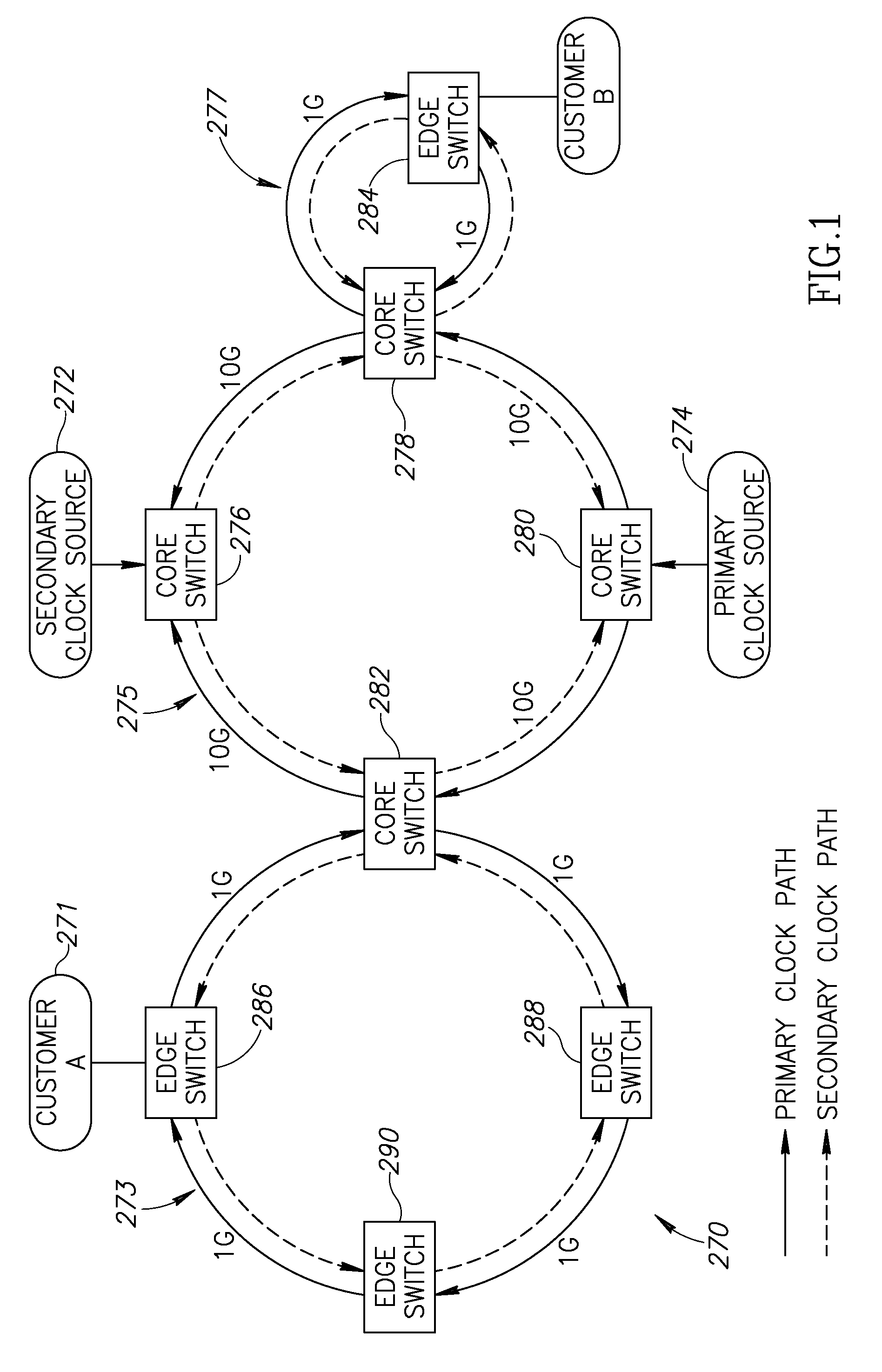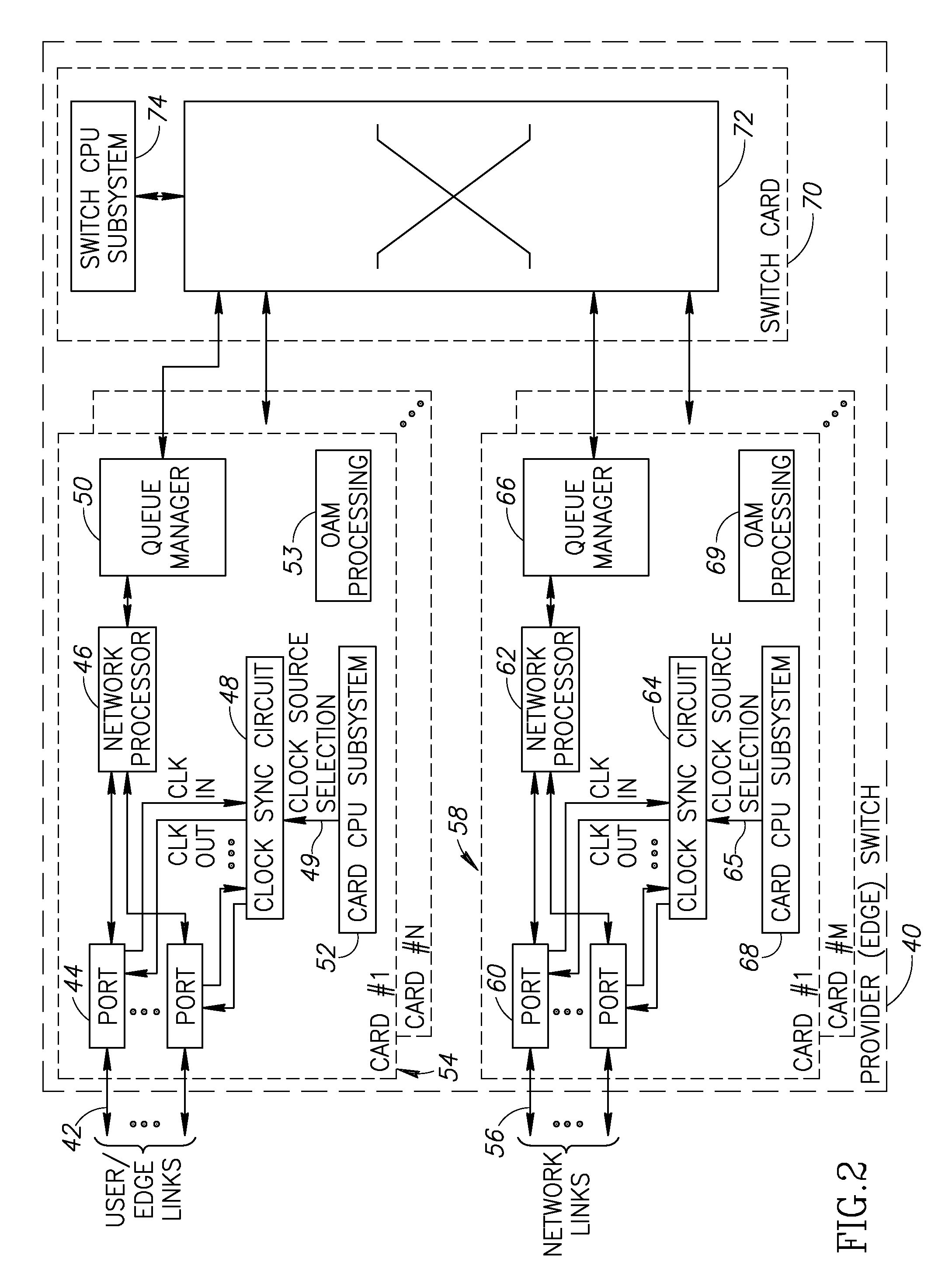Clock synchronization and distribution over a legacy optical Ethernet network
a legacy optical ethernet network and clock synchronization technology, applied in the field of data communication, can solve the problems of inability to convey information synchronously, conventional ethernet networks lack clock synchronization mechanisms, and a large amount of fiber installed in both new and existing facilities
- Summary
- Abstract
- Description
- Claims
- Application Information
AI Technical Summary
Benefits of technology
Problems solved by technology
Method used
Image
Examples
embodiment
Provider Switch Embodiment
[0059]A network device can be adapted to incorporate the clock synchronization mechanism of the present invention. Hardware means and / or software means adapted to execute the mechanism may be incorporated, for example, within the line cards of a network device such as a core switch, access switch, provider switch, enterprise switch, Network Management System (NMS), Label Switching Router (LSR), Ethernet LAN switch, network switch or any other wired or wireless network device. The network device may be constructed using any combination of hardware and / or software. A provider switch is defined as any switch used by a service provider. Examples of provider switches include edge switches, core switches and access switches. An enterprise switch is defined as any switch used within an enterprise, such as the switches used within a corporation, college campus, etc.
[0060]As an example, the invention is applied to a provider edge switch and a provider (core or middl...
PUM
 Login to View More
Login to View More Abstract
Description
Claims
Application Information
 Login to View More
Login to View More - R&D
- Intellectual Property
- Life Sciences
- Materials
- Tech Scout
- Unparalleled Data Quality
- Higher Quality Content
- 60% Fewer Hallucinations
Browse by: Latest US Patents, China's latest patents, Technical Efficacy Thesaurus, Application Domain, Technology Topic, Popular Technical Reports.
© 2025 PatSnap. All rights reserved.Legal|Privacy policy|Modern Slavery Act Transparency Statement|Sitemap|About US| Contact US: help@patsnap.com



